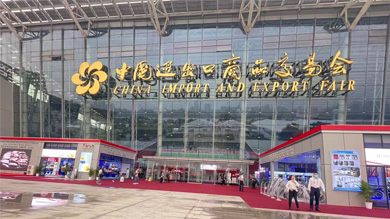10 月 . 14, 2024 07:39 Back to list
Cast Steel Check Valve Applications and Advantages in Industrial Systems
Understanding Cast Steel Check Valves Features, Applications, and Advantages
Check valves are essential components in various piping systems, allowing fluid to flow in one direction while preventing backflow. Among the different materials used in manufacturing check valves, cast steel has become a preferred choice due to its durability, strength, and ability to withstand high pressures and temperatures. This article delves into the characteristics, applications, and advantages of cast steel check valves.
What is a Cast Steel Check Valve?
A cast steel check valve is a type of valve made from cast steel that automatically prevents backflow in a piping system. These valves are designed to open and close based on the pressure of the flowing fluid, using a movable disc or ball that responds to the flow direction. When the fluid flows in the intended direction, the disc or ball is pushed open, allowing passage. Conversely, if the flow attempts to reverse, the disc or ball seals against the seat, preventing backflow.
Key Features of Cast Steel Check Valves
1. Material Durability The use of cast steel provides remarkable strength and durability. Cast steel is capable of withstanding high pressures and is less prone to cracking and damage compared to other materials like plastic or cast iron.
2. High-Temperature Resistance Cast steel check valves are suitable for high-temperature applications, making them ideal for steam, oil, and gas industries. They maintain integrity under extreme conditions, which is crucial for safety and functionality.
3. Variety of Designs These valves are available in various designs such as swing, lift, and dual plate check valves, each serving specific applications. The choice of design can significantly affect performance in terms of flow dynamics and pressure handling.
4. Versatile Applications Cast steel check valves are commonly used in numerous industries, including oil and gas, power generation, water and wastewater management, and chemical processing, among others. Their versatility and reliability make them a go-to solution for many fluid control systems.
cast steel check valve

5. Maintenance and Longevity With minimal moving parts and robust construction, cast steel check valves typically require less maintenance compared to more complex valve systems. This longevity translates to reduced operational costs over time.
Applications of Cast Steel Check Valves
Cast steel check valves are utilized across a broad spectrum of applications due to their robustness and reliability. In the oil and gas industry, they are employed to prevent backflow in pipelines and processing plants, safeguarding equipment and ensuring smooth operations. In water treatment facilities, these valves help maintain pressure and prevent contamination caused by backflow. Additionally, in power plants, cast steel check valves are critical for regulating steam and water flows, ensuring the efficiency and safety of power generation processes.
Advantages of Using Cast Steel Check Valves
The advantages of using cast steel check valves are numerous. Firstly, their high strength allows them to handle demanding environments, making them suitable for both high pressure and high-temperature applications. Secondly, their design minimizes turbulence within the flow, resulting in improved performance and efficiency. Thirdly, their resistance to corrosion and wear leads to increased durability, reducing the frequency and cost of replacements.
Moreover, cast steel check valves contribute to system safety. By preventing backflow, they help protect against malfunctions and potential hazards, ensuring the integrity of critical systems. Their reliable performance, paired with low maintenance needs, makes them a cost-effective solution for many industries.
Conclusion
In conclusion, cast steel check valves are vital components in various fluid control applications. Their durability, high-temperature resistance, and versatility make them an ideal choice for demanding environments. As industries continue to evolve and face new challenges, the role of cast steel check valves in maintaining efficiency and safety will remain paramount. Understanding their features, applications, and advantages is essential for engineers and facility managers looking to optimize their fluid systems for enhanced performance and reliability.
Share
-
Understanding the Differences Between Wafer Type Butterfly Valve and Lugged Butterfly ValveNewsOct.25,2024
-
The Efficiency of Wafer Type Butterfly Valve and Lugged Butterfly ValveNewsOct.25,2024
-
The Ultimate Guide to Industrial Swing Check Valve: Performance, Installation, and MaintenanceNewsOct.25,2024
-
Superior Performance with Industrial Swing Check Valve: The Essential Valve for Any SystemNewsOct.25,2024
-
Industrial Swing Check Valve: The Ideal Solution for Flow ControlNewsOct.25,2024
-
You Need to Know About Industrial Swing Check Valve: Functionality, Scope, and PerformanceNewsOct.25,2024